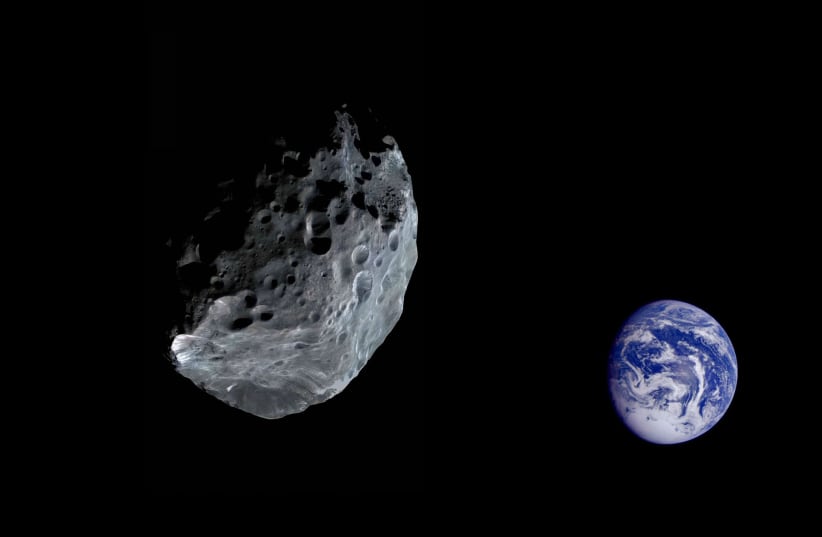An asteroid the size of around 20 bald eagles is set to have a close flyby of the Earth on Monday, May 22, NASA's asteroid tacker said.
The asteroid in question has been designated 2023 JK3, according to the Center for Near-Earth Object Studies (CNEOS) at NASA's Jet Propulsion Laboratory (JPL).
However, this asteroid is just one of four that will pass the Earth on Monday.
How big is the asteroid coming toward Earth in 2023?
Asteroid JK3 is roughly estimated to have a diameter as much as 50 meters wide. But how much is that really?
To put it in perspective for people who might not use the metric system, consider the most iconic symbol of the United States of America: The bald eagle.
According to the Smithsonian, bald eagles have a wingspan of around eight feet, or just shy of two and half meters. That means, using the bald eagle metric, asteroid 2023 JK3 is roughly 20 bald eagles in diameter.
As a bird, bald eagles need to be relatively light in order to fly. As such, despite how large they might be, they aren't exactly the heaviest animals around. As such, it is doubtful they would even come close to the mass of asteroid 2023 JK3.
What other asteroids are set to pass by soon?
Bald eagles were once known for being endangered and their numbers have since bounced back significantly to the point where they are now far more plentiful.
Likewise, asteroids are also plentiful in number, and 2023 JK3 isn't coming near Earth alone.
Here are the other asteroids accompanying it, as well as their own unique size comparisons:
- Asteroid 2023 JK7 is approximately 80 meters or around 51 and a half Hungarian Grey cattle
- Asteroid 2023 GY2 is approximately 160 meters, which is around the size of eight giant oarfish, the largest of all bony fish species
- Asteroid 2023 JZ1 is approximately 64 meters, nearly 43 aardvarks in size
Is an asteroid going to hit the Earth in 2023?
It isn't fearmongering to suggest this may happen – after all, an asteroid already hit the Earth this year. Back in February, asteroid 2023 CX1 impacted the Earth near Normandy in France. It was on the smaller side, just around the size of two Super Bowl trophies.
Several meteors have also hit the Earth. One such meteor exploded in the atmosphere in Israel back in April. Several months earlier, a corgi-sized meteor hit Texas.
None of these caused any damage, because these small meteor and asteroid impacts, when they do happen, usually don't cause any harm apart from a loud explosion.
There is a good reason for that: They were so small that they ended up exploding in the atmosphere and burning up, with any remnants being too small to cause harm.
This isn't always guaranteed to be the case, though. One meteor landed in New Jersey recently and broke through someone's roof and ceiling.
Now, out of the four asteroids passing Earth on Monday, 2023 GY2 would be the most dangerous if it hit the planet. To put this into perspective, an impact from an asteroid just 140 meters in diameter has the potential to be at least a thousand times more powerful than that released by the first atomic bomb, according to research from the Davidson Institute of Science, the educational arm of Israel's Weizmann Institute of Science.
However, this asteroid still isn't a concern because it's passing by at a very great distance.
Asteroid 2023 JK3, however, is passing by much closer, set to pass by at a distance of just around 600,000 kilometers.
Now, this isn't necessarily a cause for concern – the Moon orbits the Earth at a distance of around 384,000 kilometers. However, it is still passing closer than most asteroids do, and it will be closer than some other things. For instance, NASA's James Webb Space Telescope orbits the Earth at a distance of around 1.5 million kilometers away.
Do we have any way to stop an asteroid from hitting the Earth?
Yes. Scientists at NASA and other institutions around the world, including some here in Israel, have been working hard to find ways to protect the Earth from an asteroid impact.
While a number of initiatives have been discussed, the one with the most support is NASA's Double Asteroid Redirection Test (DART) Mission, which was successfully tested by crashing into the faraway asteroid Dimorphous, thus altering its orbit.
So humanity is at no risk of being killed by asteroids any time soon – which makes sense since NASA has already predicted that the Earth is in no danger from any catastrophic asteroid impacts for the next century.

